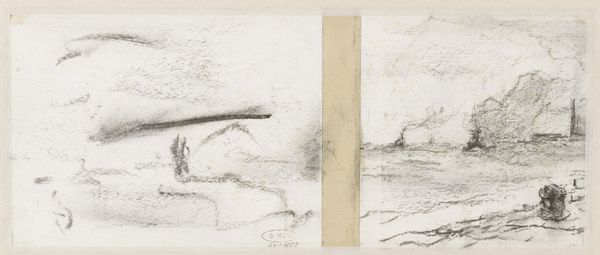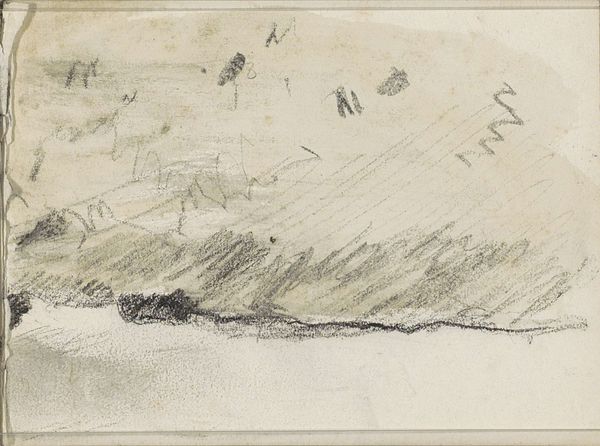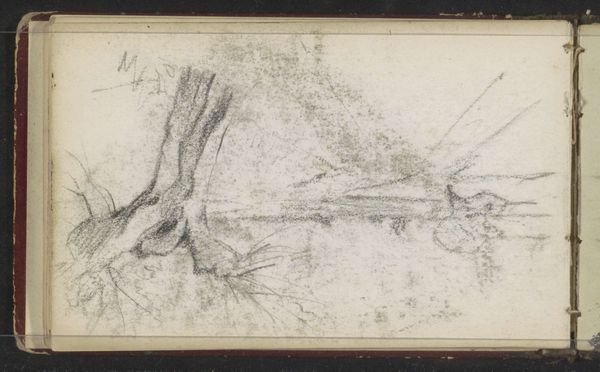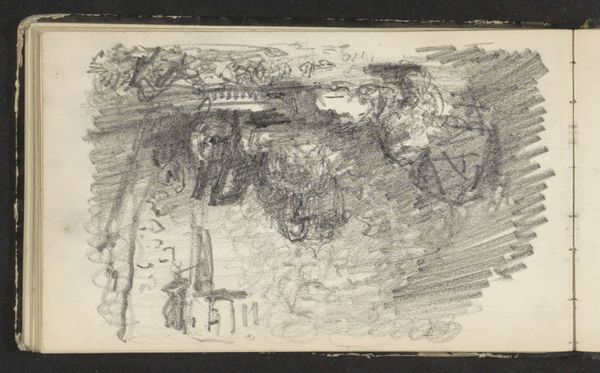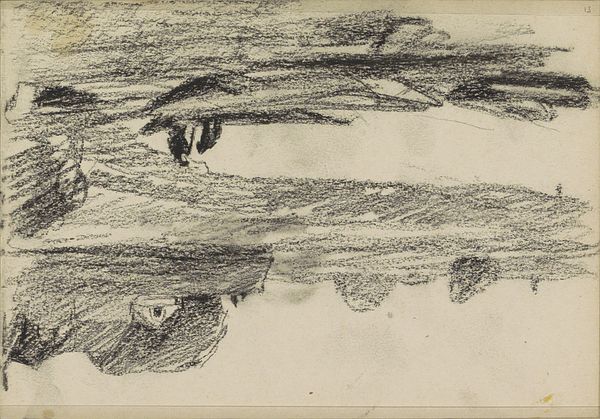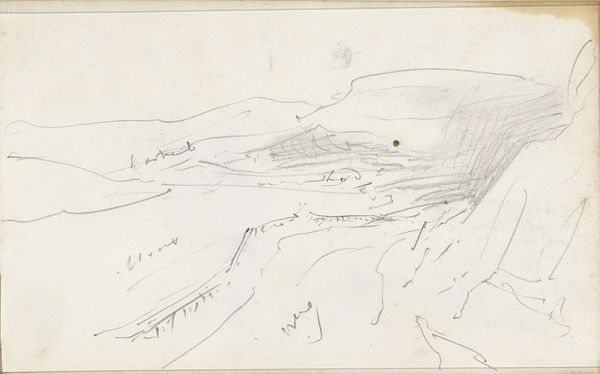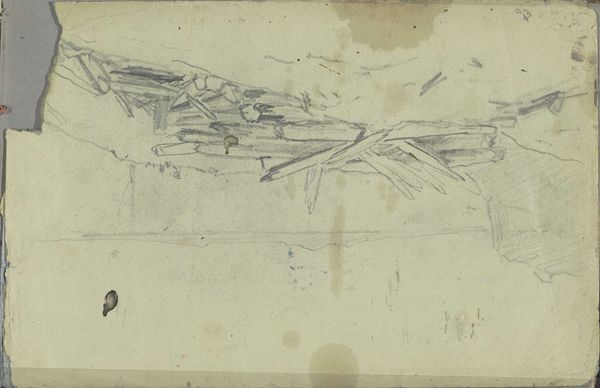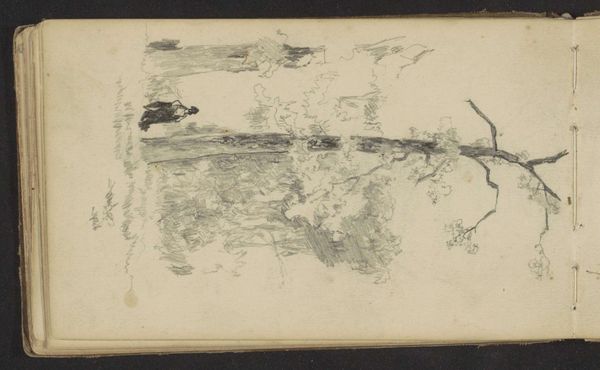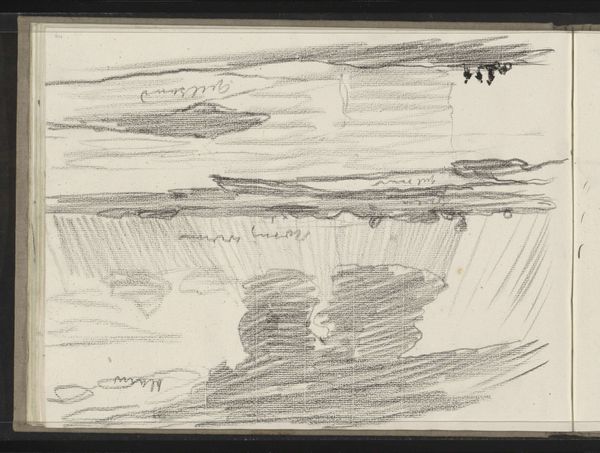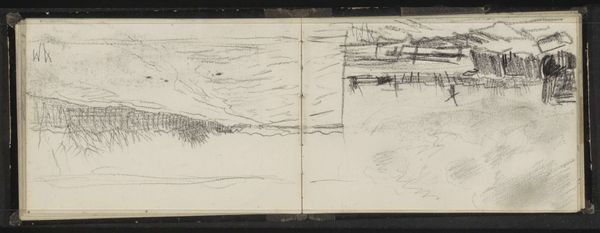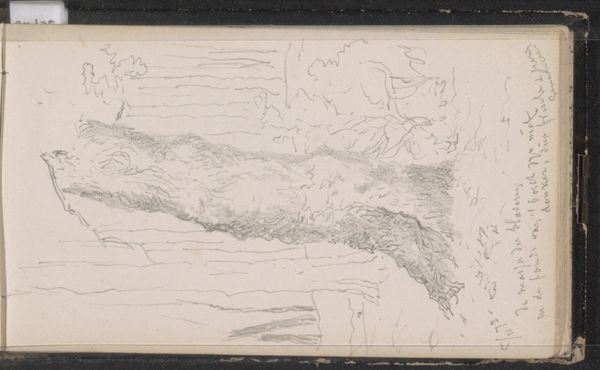
drawing, coloured-pencil, paper, pencil
#
drawing
#
coloured-pencil
#
landscape
#
paper
#
coloured pencil
#
pencil
#
sketchbook drawing
Copyright: Rijks Museum: Open Domain
Editor: Today, we’re looking at Willem Witsen's "Rocky Coast near St. Andrews, Canada," made around 1915, using pencil and colored pencil on paper. It feels like a very immediate sketch; almost a study in textures. What stands out to you in this drawing? Curator: Immediately, I am struck by the artist’s emphasis on line. Consider how Witsen has used varied pressure to delineate the forms; notice the thicker, darker lines defining the edges of the rocks, compared to the softer, more suggestive lines representing the water. Do you see how this technique creates a clear hierarchy of visual elements? Editor: Yes, I see it! The sharp outlines make the rocks feel very solid and present, while the water almost disappears into the background. How does this emphasis impact our perception of the scene? Curator: It guides our eye to perceive the intrinsic structures of the coastline itself. He directs our focus onto the morphology, on the material. The composition doesn't simply represent a coast; instead it asks us to contemplate the forms. Consider the repetition of horizontal lines: the layering echoes geological strata, inviting an interpretation about the landscape's slow formation. Do you agree? Editor: That makes a lot of sense. I hadn't thought about how the lines could suggest the age of the landscape itself. So, you're saying it's less about capturing a scene and more about exploring its essential components. Curator: Precisely. The drawing exists less as a representation, but more a presentation of formal concerns. Editor: I see that now! Focusing on the intrinsic elements like line and form provides a whole new appreciation for the artist's approach. Curator: Indeed. It reveals an artistic intent focused on elemental structure and form above narrative representation.
Comments
No comments
Be the first to comment and join the conversation on the ultimate creative platform.
